
Low Profile Car Tires
Content
Among the types of car tuning, one of the very first changes that transport undergoes is the installation of beautiful discs with a non-standard diameter. Usually this parameter is directed upwards. When a car owner installs large rims to fit the wheel into the arch, special low-profile tires must be placed on the rim.
Such rubber has both its advantages and some disadvantages. Let's consider what is special about such rubber and how such an upgrade affects the technical condition of the car.
What are low profile tires?
A low profile tire is a modification in which the height of the rubber has a 55 percent ratio to its width (there are also variants with a lower ratio). Here's an example of a low profile tire: width 205 / height 55 (not in millimeters, but as a percentage of width) / radius 16 inches (or another option - 225/40 / R18).
Considering how rapidly the world of auto-tuning is developing, we can conclude that the profile version at 55 will soon cease to be considered the border between tires of standard height and low-profile modification. For example, among motorists there are those who do not consider the size 205/55 with the 16th radius as a low-profile modification. If you look a little into the history of the appearance and evolution of low-profile rubber, then there was a time when the 70th height was considered non-standard. Today, tires with dimensions 195/70 and a radius of 14 are already positioned as high-profile.
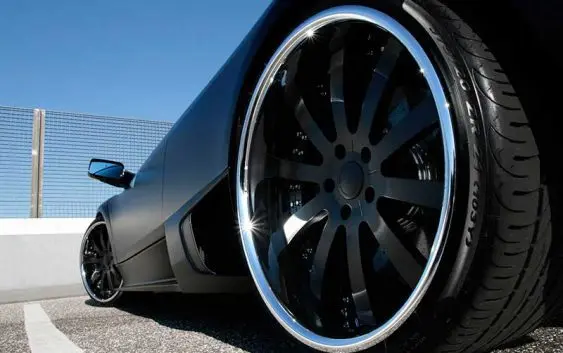
Michelin was the first company to introduce rubber with reduced collar height for the first time. The products began to be produced in 1937, but the poor quality of the roads and the heavy weight of the cars of that era did not allow the use of such a modification on serial vehicles. Basically, these tires were installed on sports cars.
Unlike ordinary motorists, motor sports enthusiasts were immediately positive about the idea of understating their racing tires. The reason for this is that the car became more stable when performing maneuvers at high speed. Lowered non-standard tires returned to production road cars in the late 1970s.
Why you need low profile tires
Many fans to change the appearance of their transport immediately stop at modifying the rubber with a lowered side. The reason for this is the ability to install a disc with an increased radius on the machine. Therefore, the first reason why low-profile tires are installed is to change the design of the car.
In addition to visual changes, such rubber changes some of the technical parameters of the machine. First of all, athletes use the technical characteristics of these elements. So, having gained a decent speed, the sports car must also slow down in time. This is where the reduced profile tires help. Since there is now an enlarged disc in the wheel arch, due to which the contact patch with the asphalt increases, which increases the efficiency of the braking system.
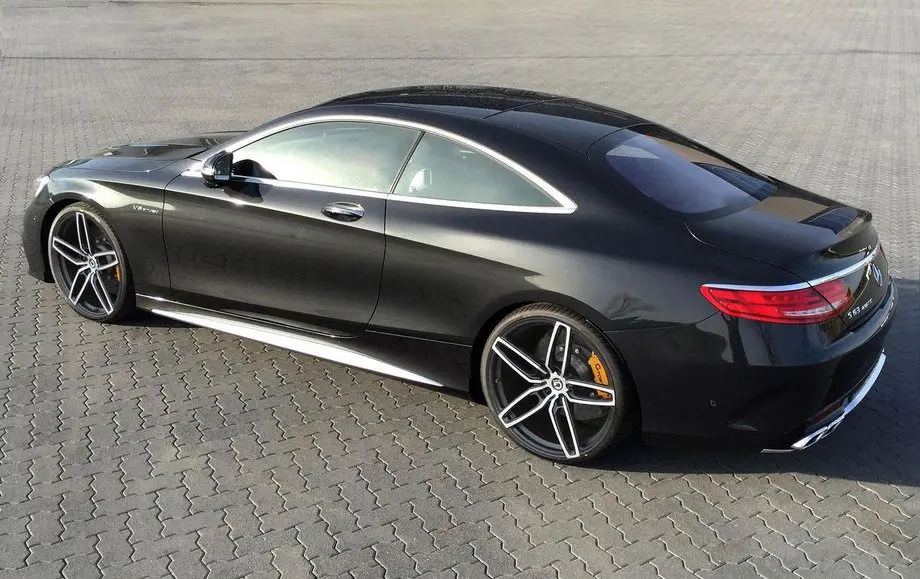
Another parameter that affects the magnitude of the braking distance (everything you need to know about the braking distance is described separately) is the width of the rubber. Since the wheel is now larger, it is technically possible to install a wide-profile version.
For sports cars, roll in bends is also very important. In addition to the stiffer suspension, it is the low-profile rubber that allows the car to maintain its position parallel to the road (under load, the tire does not compress as much as the standard analog). The aerodynamics of sports transport depends on this (this parameter was described in detail in separate review).
What should be the pressure?
There is a common belief among motorists that the pressure in low-profile tires should be much higher than in standard wheels. In fact, this parameter primarily depends on the roads on which such a car will drive, as well as on the recommendations of the vehicle manufacturer.
If a regular wheel is not inflated in accordance with the manufacturer's recommendations, then the rubber will wear unevenly (in addition, the tire wear is described here). But if the pressure in low-profile tires is lower than the manufacturer's recommendation for a particular vehicle, the risk of breakdown when hitting a sharp-edged pit is significantly increased. Often this leads to a hernia on the wheel (what is it and how to deal with them, it is told here).
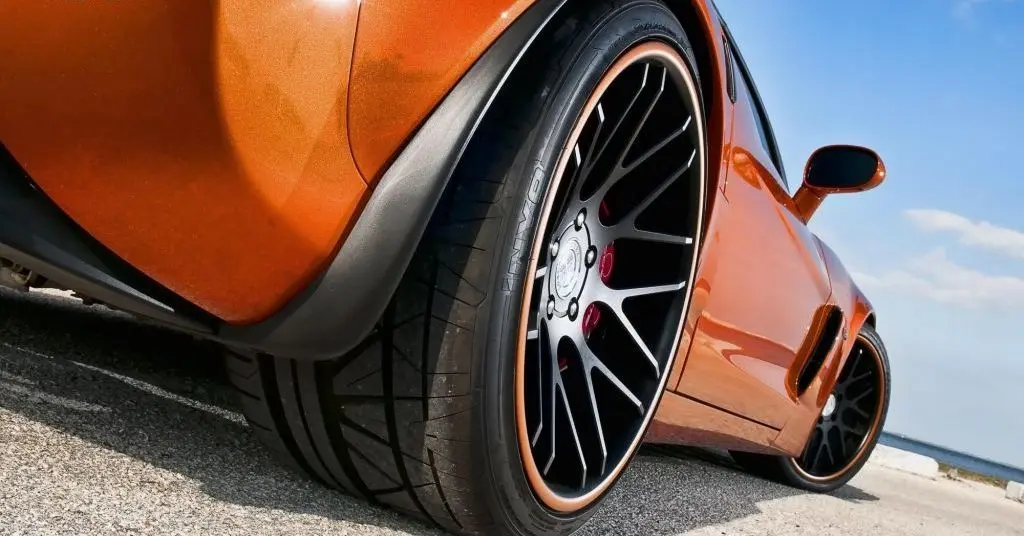
When the transport has to overcome poor-quality roads, to increase safety, the driver may decide to pump up the wheels a little (increase the pressure in the wheels within the range of 0.15-0.20 bar relative to the recommended rate). However, it should be taken into account that over-inflated wheels, like under-inflated ones, have a smaller contact patch with the road. This will greatly affect vehicle handling, especially at high speeds.
There are no universal recommendations regarding the pressure in such wheels. You must adhere to the standards set by the car manufacturer. This parameter depends on the weight of the car.
Advantages and disadvantages
It is impossible to create tires that are ideal for all occasions, so a low profile modification has not only its advantages, but also disadvantages. First, consider what is the plus of such a bus:
- On such wheels, you can develop a higher speed (for some modifications this parameter is within 240 km / h and more);
- A sports car with large wheels and thin tires looks much more impressive;
- When the car overcomes corners at speed, the low-profile version of the tires reduces body swing (the side of the product does not deform so much under load);
- The dynamics of the car improves - due to better grip, the acceleration speed increases (as far as the engine power allows);
- The braking performance of the car is improved - due to the same increased grip (a more noticeable effect than that of a narrow-profile tire), the efficiency of the braking system increases;
- Due to the greater width, the contact patch increases, so the car does not react so much to imperfections in the road surface (the wheel is less likely to be out of adhesion to the road, on which there are small pits);
- If the car is equipped with disks made of light alloys, then in combination with them tires with a reduced profile make the vehicle itself somewhat lighter, which also affects its dynamics;
- The wide contact patch increases the maneuverability of the machine at high speeds.
These advantages are due not only to the height of the side and the width of the rubber. The tread pattern is also of great importance. Most often, such rubber will have a directional type of pattern, and the side will be reinforced so that the wheel will not be damaged when it hits the hole.
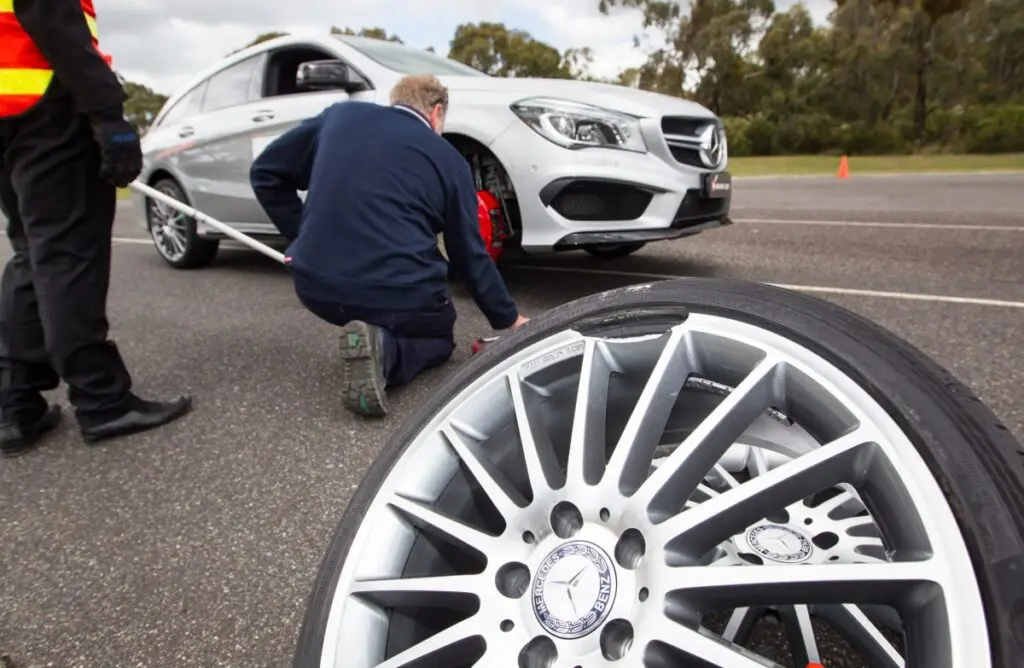
Despite these advantages, installing this modification on many cars is not the best solution. Here are just some of the factors that highlight the minus of these tires:
- A sports tire has a shorter working life than a standard wheel;
- The comfort in the cabin when driving on uneven roads is noticeably impaired;
- Usually a stiffer suspension is installed in vehicles to give sporty characteristics. In combination with low-profile wheels, each bump will give the driver a spine, which is still a pleasure. This effect is especially enhanced in winter on poorly cleaned roads;
- Directional rubber is noisier;
- Stiffer wheels can adversely affect the car's suspension;
- At low speeds, it is much more difficult for the driver to turn the steering wheel, so it is better not to put such tires on a car without a power steering;
- Sports tires have a narrow specification, so it is better to install a modification on the transport that will be most suitable for different operating conditions;
- If you get into a deep hole, there is a greater likelihood of damaging not only the tire, but also the disc itself (there are cases when an expensive disc crashed, and not just bent);
- Such a modification is much more expensive than standard tires, and more expensive wheels must be purchased for installation on a car.
So, as you can see from this comparison of pros and cons, the advantages of low-profile tires relate more to the appearance of the car and the speed characteristics of transport, but the disadvantages are associated with a decrease in comfort and a negative effect on the car itself.
How to choose?
Although some motorists select tires on their own in accordance with the wheels that were purchased for the car, it would be better to follow the recommendations of the vehicle manufacturer if there is no desire to often repair the car due to the installation of the wrong wheels.
Usually, when releasing a new car model, the automaker indicates which tires can be installed on it. The list may contain several different options that will not critically affect the car's chassis and suspension. This list also indicates the low profile option.
Here is a small example of such a list:
| Car model: | Standard: | Analog: | Tuning: |
| Volkswagen Golf V (2005) | 195*65r15 | 205*60r15; 205*55r16 | 205*50r17; 225*45r17; 225*40r18; 225*35r19 |
| Audi A6 quattro (2006) | 225*55r16 | 225*50r17 | 245*45r17; 245*40r18; 245*35r19 |
| BMW 3-Series (E90) (2010) | 205*55r16 | 205*60r15; 225*50r16; 205*50r17; 215*45r17; 225*45r17; 215*40r18; 225*40r18; 245*35r18; 255*35r18; 225*35r19; 235*35r19 | Front (back): 225 * 45r17 (245 * 40 r17); 225 * 45r17 (255 * 40 r17); 215 * 40r18 (245 * 35 r18); 225 * 40r18 (255 * 35 r18); 225 * 35r19 (255 * 30 r19); 235 * 35r19 (265 * 30r19); 235 * 35r19 (275 * 30r19) |
| Ford Focus (2009) | 195*65*r15; 205*55r16 | 205*60r15; 205*50r17; 225*45r17 | 225*40r18 |
Model manufacturers and examples
Here is a list of the best low-profile tire manufacturers:
| Brand: | Model options: | Advantages: | Disadvantages: |
| Michelin | PS2 Sport Pilot (295/25 R21) | Long time on the market; Developing new tire modifications; Wide range of products; Implementing innovative technologies | Products are expensive |
| Goodyear | Ultra Grip Ice 2 245/45R18 100T XL FP | Extensive experience in the production of tires; The conveyor is equipped with advanced equipment; Advanced technologies are introduced | Poorly tolerated on poorly paved roads |
| Pirelli | PZero Red (305/25 R19) | Sports direction; Low-noise products; Large assortment; Good controllability | Poorly take blows |
| Hankook | Wind S1 Evo3 K127 245/45R18 100Y XL | High resistance to wear; Models are elastic; Affordable price; Long working life | Inadequate on wet surfaces |
| Continental | ContiSportContact 5P (325/25 R20) | Advanced technology is introduced; High quality and reliability; Low noise production; Provides good adhesion to the coating | Expensive |
| Nokian | Nordman SZ2 245 / 45R18 100W XL | Adapted for northern regions; Provide stability on wet and slippery surfaces; Soft products; Low noise | Low working life and high cost |
| Yokohama | ADVAN Sport V103 (305/25 R20) | Provide good grip on the road surface; Excellent balance between price and quality; Long service life | In winter tires, spikes quickly fly out; The sidewall is thin, because of which there is a high probability of breakdown or lateral hernia when it enters a large pit |
| Bridgestone | Power RE040 245 / 45R18 96W Run Flat | Affordable cost; Durable side; Long working life | Rigid product; Good budget option for asphalt, but poorly tolerated off-road driving |
| cooper | Zeon CS-Sport 245 / 45R18 100Y | Decent quality; Affordable price; The tread provides good cross-country ability on difficult road surfaces | The tread is often noisy; Most vendors rarely purchase such products |
| Toyo | Proxes 4 (295/25 R20) | Provide good grip on asphalt and vehicle handling; High quality products; Elastic material | Poorly tolerated long-term driving on a rut; Costly |
| Sumitomo | BC100 245/45R18 100W | Excellent balance; Elastic material; Unique tread pattern | Tires often turn out to be heavier than analogues from other manufacturers; Poor cornering stability at high speeds |
| nitto | NT860 245/45R18 100W | The products have an affordable price; Provide good grip on the road surface; Unique tread pattern | CIS stores have a very meager selection of products; They do not like aggressive driving style |
| Sava | Eskimo HP2 245/45R18 97V XL | Affordable cost; Elastic material; Good quality; Products have a modern design | Heavier than comparable products from other brands; Tread is often noisy |
To determine the type of low-profile rubber, you should pay attention to the feedback of those who have already used this product. The same approach will help you choose quality tires for standard wheels.
How does low profile rubber affect suspension?
To understand how harmful rubber is on the suspension condition, one must take into account that not only the tire affects the era of a part of the car. Everyone knows that the suspension is designed in a car to dampen vibrations coming from the road. More details about the device and types of suspensions are described in another review.
The weight of the car, as well as the wheels itself, greatly affects the condition of the suspension. If you put in alloy wheels, then this slightly compensates for the stiffness from tires with a low bead.
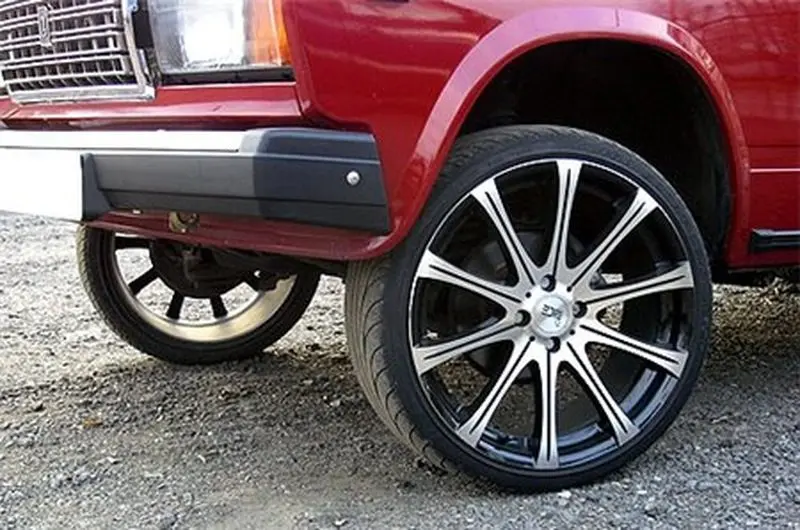
If a motorist decides to change the profile of the rubber, he should also investigate which rims will work best with the given car and tires. The main factor that significantly affects the condition of the springs, shock absorbers and levers is the suspension mass (including the weight of the wheels).
The height of the tire profile and their softness primarily affect how long a new disc will last if it hits pits frequently. With adequate use, low-profile tires may not affect the suspension at all. There are frequent cases when suspension elements are killed even on high-profile wheels.
To a greater extent, the suspension is influenced by the driving style that the motorist uses. The well-known saying "More speed - less holes" just indicates the reason why springs, shock absorbers, levers and other elements quickly break down. And if we consider that low-profile tires are bought mainly by amateurs to drive, then some see a connection between such tires and frequent breakdowns of the car. In fact, if you change your riding style or choose a quality surface for sporting events, there will be fewer problems with the suspension.
Results
As you can see, low-profile tires have their own advantages, and to a greater extent they relate to the sports characteristics of the vehicle, as well as the appearance of the car. At the same time, the motorist sacrifices comfort, since when driving on normal roads, each bump will be felt more strongly.
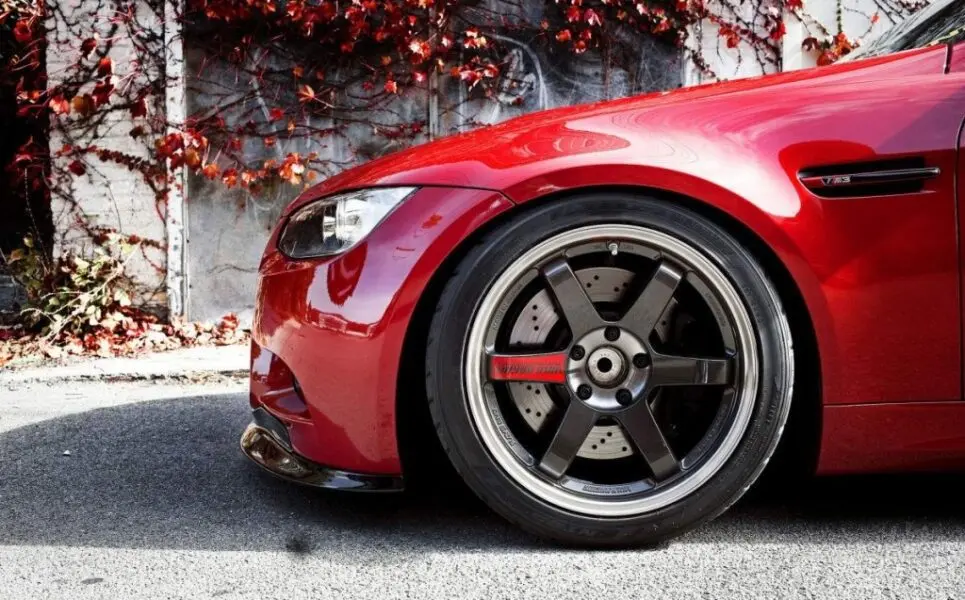
So that non-standard tires do not have a negative effect on the technical condition of some parts of the car, you need to adhere to the same recommendations that apply to the operation of standard wheels:
- Do not inflate tires. If the pressure in the wheel exceeds the indicator recommended by the manufacturer, then regardless of the height of the tire bead, the car will be like on wooden blocks;
- Avoid driving fast on poorly paved roads. If the car is tuned for a sporty driving style, then it is better to leave this mode for separate competitions on closed tracks, and not use it on public roads. In addition to keeping vehicles in good technical condition, this will contribute to road safety.
And in addition to this review, we offer a small tip from an experienced motorist about low-profile tires:
Questions and answers:
What profiles can tires have? The normal profile is more than 90 percent in relation to the width of the tire. There are wide profile, low profile, ultra low profile, arch rubber and pneumatic rollers.
What is a tire profile? This is one measure of tire size. Basically, this is the height of the rubber. It usually has a certain ratio with respect to the width of the rubber.


One comment
Guevara
Radius 16 inches
Some goofs wrote this!